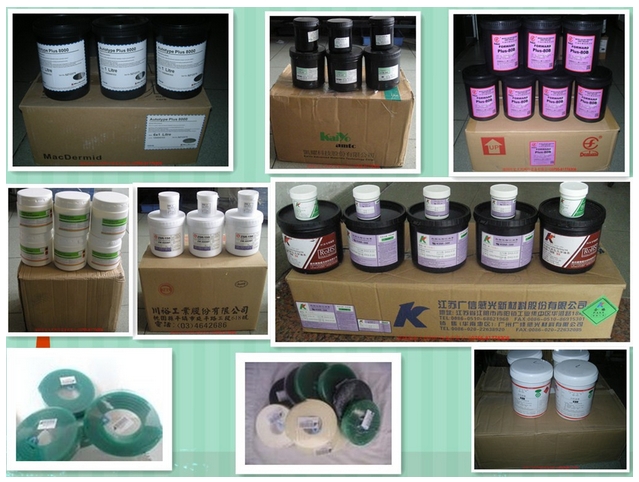- 06
- Oct
Discussion on several important technical properties of PCB ink
Discussion on several important technical properties of PCB ink

Whether the quality of PCB ink is excellent or not, in principle, can not be separated from the combination of the above major components. The excellent quality of ink is the comprehensive embodiment of the scientific, advanced and environmental protection of the formula. It is reflected in:
viscosity
It is short for dynamic viscosity. It is generally expressed by viscosity, that is, the shear stress of fluid flow divided by the velocity gradient in the flow layer direction, and the international unit is PA / S (Pa. s) or millipa / S (MPa. S). In PCB production, it refers to the fluidity of ink driven by external force.
Conversion relationship of viscosity units:
1Pa。 S=10P=1000mPa。 S=1000CP=10dpa.s
Plasticity
It refers to that after the ink is deformed by external force, it still maintains its properties before deformation. The plasticity of ink is conducive to improve the printing accuracy;
Thixotropic
Ink is colloidal when it is standing, and the viscosity changes when it is touched, also known as shake and sagging resistance;
mobility
(leveling) the extent to which ink expands around under the action of external force. Fluidity is the reciprocal of viscosity. Fluidity is related to the plasticity and thixotropy of ink. The greater the plasticity and thixotropy, the greater the fluidity; If the mobility is large, the imprint is easy to expand. Those with small fluidity are prone to netting and inking, also known as anilox;
Viscoelasticity
Refers to the ability of the ink to rebound quickly after being cut and broken by the scraper. It is required that the ink deformation speed is fast and the ink rebound is fast in order to be conducive to printing;
Dryness
It is required that the slower the ink dries on the screen, the better. After the ink is transferred to the substrate, the faster the better;
fineness
The size of pigment and solid particles, PCB ink is generally less than 10 μ m. The fineness shall be less than one third of the mesh opening;
spinnability
When picking up the ink with an ink shovel, the extent to which the filamentous ink does not break is called wire drawing. The ink is long, and there are many filaments on the ink surface and printing surface, which makes the substrate and printing plate dirty and even unable to print;
Transparency and hiding power of ink
For PCB ink, according to different uses and requirements, various requirements are also put forward for the transparency and hiding power of the ink. Generally speaking, circuit ink, conductive ink and character ink require high hiding power. The solder resist is more flexible.
Chemical resistance of ink
PCB ink has strict standards for acid, alkali, salt and solvent according to different purposes;
Physical resistance of ink
PCB ink must meet the requirements of external force scratch resistance, heat shock resistance, mechanical peeling resistance and various strict electrical performance requirements;
Safety and environmental protection of ink
PCB ink shall be low toxicity, odorless, safe and environmental friendly.
Above, we have summarized the basic properties of twelve PCB inks, and the viscosity problem is closely related to the operator in the actual operation of screen printing. The level of viscosity has a great relationship with the smoothness of silk screen printing. Therefore, in PCB ink technical documents and QC reports, the viscosity is clearly marked, indicating under what conditions and what type of viscosity test instrument to use. In the actual printing process, if the ink viscosity is high, it will cause printing leakage and serious sawtooth on the edge of the figure. In order to improve the printing effect, diluent will be added to make the viscosity meet the requirements. But it is not difficult to find that in many cases, in order to obtain the ideal resolution (resolution), no matter what viscosity you use, it can not be achieved. Why? After in-depth study, it was found that ink viscosity is an important factor, but not the only one. Another important factor is thixotropy. It also affects the printing accuracy.
